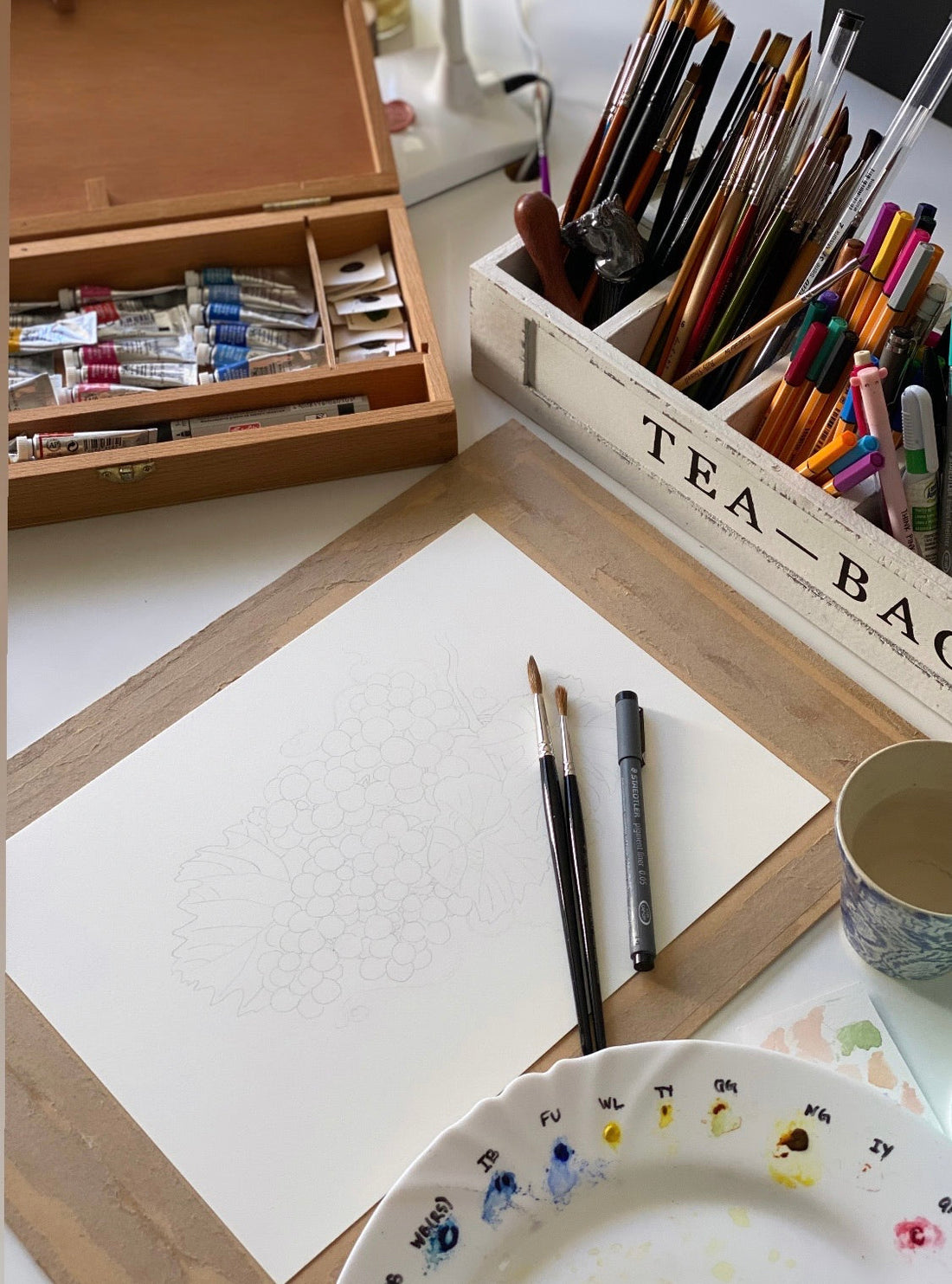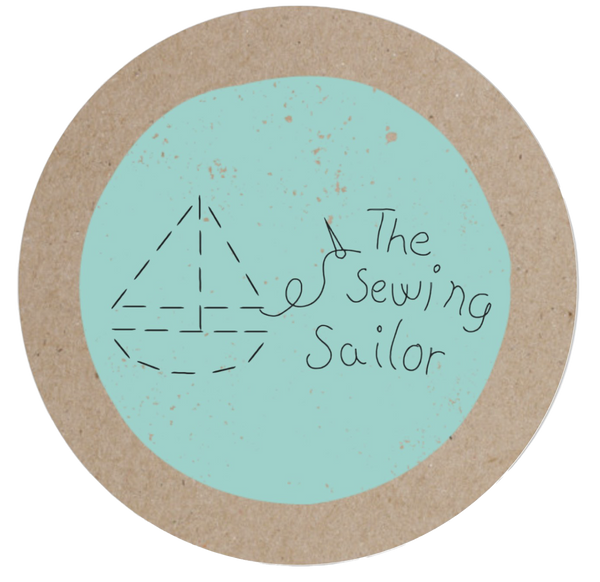
MY FAVOURITE ART SUPPLIES
Hallo Friends,
this week I am sharing with you the list of my absolutely favourite art supplies to help you set yours up.
I must admit that, being a self taught artist, at the beginning of my career I had no idea of which materials I should have used and I have spent quite some time (and money... 😉) researching and testing several brands and products.
After some time, however, I came up with my favourite list of supplies that I can really not do without. You might think that my studio must be overloaded with brushes, paper, paints and all the other "artist's stuff". And there is the mistake! Once I have settled on my favourite products, I found it pretty easy avoiding getting lost in the thousand materials available and also avoiding spending lots of money on unnecessary things.
So here is my list, which I hope can help you to set up your art supplies box, especially if you are just starting out 😉
🗒️ PAPER
Well, this was a pretty easy decision. Being Italian I grew up creating on Fabriano papers and so I went for what I knew, just to find out afterwards that most botanical artist chose Fabriano as well. My favourite paper is FABRIANO ARTISTICO HP, extra white or traditional white base on the project I am working on, but absolutely always HP (Hot Pressed), in order to be able to paint beautiful small details. I like also ARCHES paper, but Fabriano is definitely my go to.
If I am on the way or I am testing a new technique, I always take my Sketchbook with me, with my choice being a ETCHR Hot pressed sketchbook.

🖌️ BRUSHES - The BIG DILEMMA!
Should I use natural or synthetic fibres? I tried both, I tried sooo many brands and end up with my absolutely favourite brand, Winsor and Newton, Series 7 natural brushes, which suits my delicate, not too wet and detailed painting style. I love their softness and durability. They might be a bit more expensive than synthetic brushes, but do you know what? I need only 3 of them for ALL my art: round n.2 (my absolutely to-go brush), n.4 and n.6. You can but them in any art supply shop all over the world!
I also have two more brushes I really cannot do without: my Eradicator brush from Billy Showell (thank you Billy for fabricating this GENIUS BRUSH!!! ), the perfect lifting and erasing out brush, and my Da Vinci COSMO SPIN 5/0 for the million of fine details that I love so much!

🎨 WATERCOLOURS
There are so many brands and quality levels on the market. I chose to go with Winsor and Newton, which I find being one of the absolutely best brands when it comes to vibrancy of colours, texture and durability. They offer a student line, called Cotman, which was my starting palette,, more affordable for beginners, and a Professional line, which is what I use now.
Now the dilemma is which colour to buy and how many. I keep my palette very simple, using only primary colours plus a couple more that I really love when mixing browns and botanical greys, which are Winsor Violet and Burnt Sienna. The most important thing for me is that the colours are TRANSPARENT, which means that I can paint in layers and the colour will shine through them. If you are uncertain if a colour is transparent, check on the back of your tube: if you see an empty square symbol, your colour is transparent, if it is solid coloured, your colour is opaque and if you see a square with a line across it, your colour is semi-transparent. You can always ask the art shop for direction 😉
For the primaries, I would suggest to own a warm and cold of each of the 3 primaries.
My favourite and most used colours are definitely:
Transparent Yellow - Quinacridone Gold - Indian Yellow
Scarlet Lake - Permanent Rose - Quinacridone Red
Winsor Bleu Red Shade and Winsor Blue Green shade - Ultramarine - Indanthrene Blue
Winsor Violet - Burnt Sienna
I use liquid colours, which I squeeze onto my palette and let dry between painting sessions (you can reactivate the colours just by spraying them with a little water), but you can also use half pans with dried colours. The choice is just up to what you feel more comfy with, no right or wrong here!

🍽️ PALETTE
I use nothing fancy, just an old kitchen ceramic plate which will never be used for food anymore, and some small cute palette that I bought from artisan makers for travelling. The main thing here is that the palette is made of ceramic, which allows you to mix your colours beautifully and avoids them to separate just after mixing.

✏️ PENCILS, ERASERS and PENS
Pencils: You can never have too many pencils, or can you? I usually like to have an HB pencil for sketching and an H pencil for transferring my drawing to watercolour paper or to draw directly on it. An H pencil contains less graphite so that the marks are easier to erase from the paper and are lighter under the colours.
Erasers: throw them away!!!! 😂 or at least this is what I tell my students, because art is art, there are no such thing as mistakes there! I rather use a light pencil mark than overusing my eraser and ruining the paper. But yes, I know that sometimes we need it. For those situations, I use a Tombow MONO ZERO eraser, with a very tiny point that allows for very precise corrections. I also use a Winsor and Newton Kneadable Eraser to lift out any excess of graphite from my paper before starting to paint.
Ink Pens: I often combine ink and watercolour for some of my nostalgic botanicals (or for detailed ink drawings). It is very important to look for waterproof ink pens, which won't smudge once you start to use water. I use Staedtler or Winsor and Newton ink pens, with my favourite being a 0.05 one (I know, again those little details...). Black or Sepia are my colour to go, based on the feeling that I want to give to my work.

🔍 OBSERVATION TOOLS
Especially when it comes to botanicals, I help my research with the use of observation tools like magnifying glasses, dividers, rulers. Anything which can help making details more evident and taking measurements easily. Anything will work, it is really up to you and what you feel more comfy with. I love my golden dividers, I think mostly because I used them while sailing across the world to draw our routes on the maps and they are part of me and my history (and a precious object that my hubby is always trying to steal from me 😄).

🩹 MASKING FLUID
Very useful to mask out small areas that you want to keep white. I use Winsor and Newton, a bit stinky at the beginning, but absolutely spot on for the job!
🖥️ LIGHT PAD and TRACING PAPER
To trace my drawings to watercolour paper, I usually use a light pad (many art store offer good and affordable ones), or tracing paper if I want to work with complex compositions. Have you run out of tracing paper and don't know what to do? A small piece of baking paper will just do the work 😉
I hope this list of art supplies can help you set up your art desk and let you be free to create and let your imagination run free!
Please contact me for any question you might have at
thesewingsailor@gmail.com
I would love to help you start or refine your art journey!
Happy paining to you all,
Elena


1 comment
Nice site!